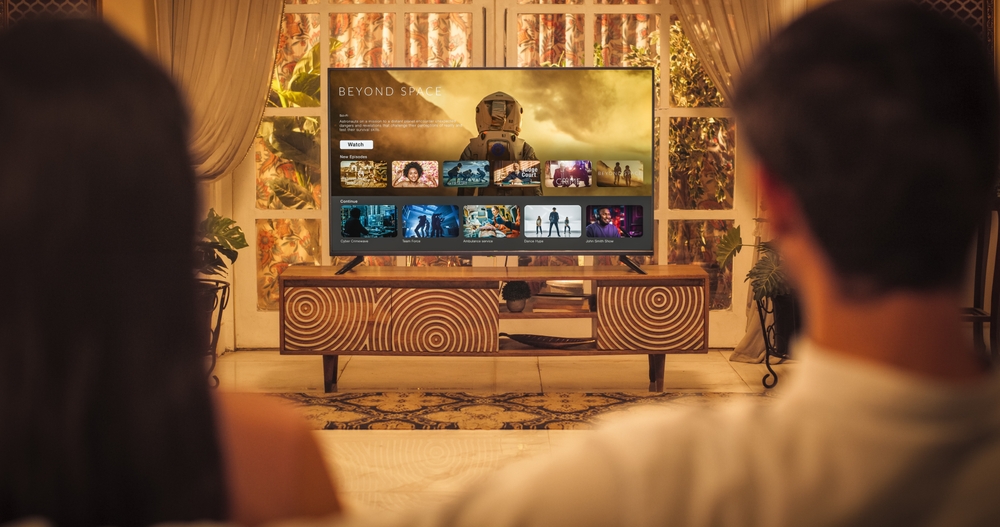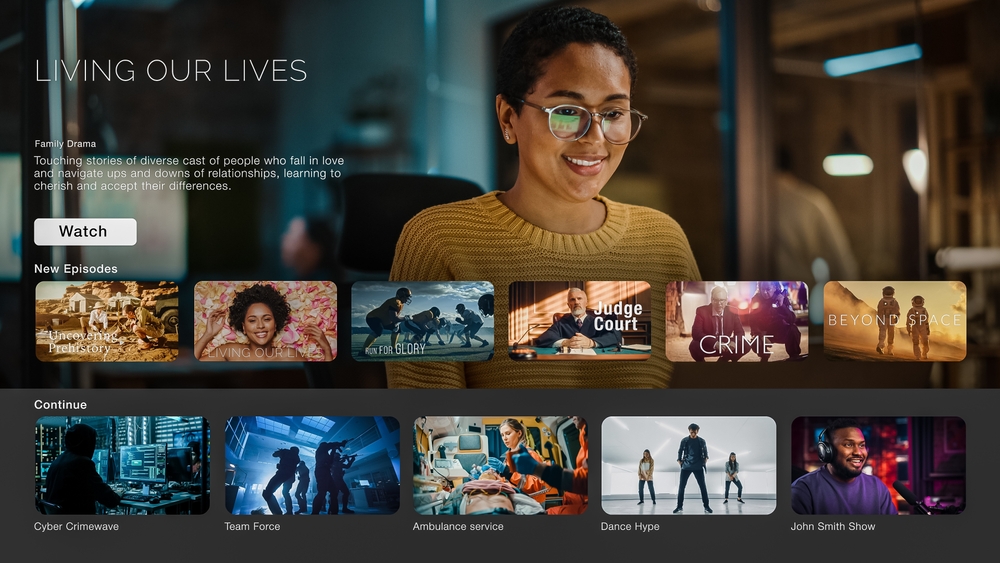You know when you and your family sit down for one episode, and suddenly it’s two in the morning and you’re questioning every life choice that led you here? That’s not an accident.
Streaming platforms are carefully engineered playgrounds built to keep your brain engaged, your eyes glued, and your sense of time gently dismantled. They play on deeply wired psychological tendencies: curiosity loops, habit formation, reward cycles, even identity. The result is an experience that feels effortless, delightful, and strangely hard to walk away from.
1. The Endless Scroll That Never Lets You Pause
Streaming platforms often display content in fluid, endless horizontal carousels that encourage browsing as a default behavior. Instead of asking you to make a decision, they provide a sense of choice abundance that keeps your brain lightly engaged. The design reduces decision fatigue by letting your eyes wander instead of forcing a hard comparison between options. When you don’t have to commit, you’re more likely to explore—and exploring keeps you watching. It’s a gentle, psychological nudge that transforms “just browsing” into “well, I guess I’ll watch something.”
2. The Autoplay Countdown Built To Override Willpower
Autoplay is one of the most powerful behavioral engineering tools in entertainment. When the next episode queues up automatically, your brain doesn’t have time to evaluate whether it should continue watching. The countdown timer is intentionally short, creating urgency and smoothing the transition before logic can intervene. What starts as convenience quickly becomes compulsion. By removing friction, streaming platforms eliminate the moment where you might have stopped.
3. Personalized Recommendations Designed To Mirror Your Identity
Streaming platforms don’t just recommend content—they reflect you back to yourself. The algorithms learn your tastes, your moods, and even your time-of-day watching habits, building a digital version of your personality. Seeing shows that “feel like you” creates a sense of familiarity, connection, and belonging. When content resonates with your identity, it feels more meaningful and harder to walk away from. The platform becomes more than entertainment—it becomes validation.
4. Highlight Reels And Top Ten Lists That Trigger Social Proof
“Top 10 in Your Area” is not just a statistic—it’s a psychological tactic. Social proof suggests that if others are watching it, you should too, because popularity implies quality or cultural relevance. It taps into the human fear of missing out on shared experiences or conversation. Even if you weren’t interested before, the ranking adds a level of curiosity and urgency. Your brain wonders: Why is everyone watching this, and should I be watching too?
5. Episode Recaps And Cliffhangers That Keep Curiosity Open-Ended
Writers and platforms collaborate on structural pacing designed to keep the mental loop open. Cliffhangers spike emotional tension, leaving your brain hungry for resolution. Recaps and previews re-trigger anticipation, making sure that curiosity never fully comes down to rest. This is a psychological principle known as the Zeigarnik Effect: humans remember unfinished tasks better than completed ones. Streaming platforms lean into this to keep your attention active and engaged across hours, not minutes.
6. Interface Colors And Sound Cues That Heighten Emotional Engagement
The design of a streaming platform isn’t neutral—it’s engineered to shape your emotional state. Bright, contrasting thumbnails activate attention, while darker backgrounds create a cocoon of focus. Subtle audio cues like gentle chimes or whooshes signal progress and reward, tapping into dopamine-based learning loops. Even the spacing, animation speed, and motion of menus are chosen to feel satisfying. When the interface feels good, your brain wants to stay longer.
How Streaming Understands YOU
Streaming platforms may seem simple on the surface: just tap, play, relax. But underneath the convenience lies an intricate system of psychological nudges that guide how much you watch, how long you stay, and what you choose next. None of these tactics are inherently bad—in fact, many make the experience smooth and enjoyable—but understanding them gives you back a sense of control. Awareness transforms passive watching into intentional watching.
Have you noticed any of these tricks in your own viewing habits? Share your thoughts, stories, or personal strategies for reclaiming your time in the comments section for others to read.
You May Also Like…
8 Strange Ways Streaming Services Waste Your Money
Why Do Sports Leagues Push Fans Into Paying Hidden Streaming Costs
Could Your Favorite Streaming Service Quietly Raise Prices Again This Year?
8 Social Norms That Are Psychologically Backfiring
7 Workplace Norms That Psychologists Say Are Deeply Damaging



Leave a Reply